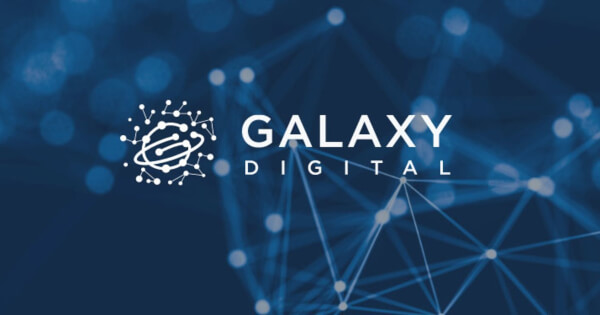
Get insights into how distributed systems work with this comprehensive overview.
What is the future of distributed systems?
The future of distributed systems looks promising as technology continues to advance. Cluster computing and grid computing are two emerging technologies that are likely to play a significant role in the future of distributed systems.
Cluster computing involves using multiple interconnected computers to work together as a single system. In addition to enhanced processing power and fault tolerance, the technology also has better scalability. Cluster computing is becoming more affordable, and is anticipated to be used more frequently in high-performance computing applications as the hardware cost continues to drop.
Cluster computing can be used in big data processing. As the amount of data being generated grows exponentially, cluster computing can be used to process and analyze this data more efficiently.
Similarly, as fields like artificial intelligence and machine learning require large amounts of computing power to train models and process data, cluster computing can be used to speed up these processes and improve accuracy.
Grid computing uses geographically distributed resources to work together as a single system. With this technology, businesses may pool resources and work together on complicated projects that would be challenging or impossible to complete using conventional computer techniques.
For instance, in the event of a natural disaster, grid computing can quickly mobilize resources from around the world to assist in response efforts. To increase their chances of earning rewards, Bitcoin miners can use grid computing to connect their computing resources with those of other miners worldwide.
As opposed to individual miners working alone, this provides a distributed network of processing power that may cooperate to solve mathematical problems more rapidly and effectively. Grid computing is projected to become more crucial for scientific research, data processing and other large-scale computer applications as cloud computing develops.
What are the advantages and disadvantages of distributed systems?
Distributed systems offer many advantages, including scalability, fault tolerance and improved performance. However, they also have disadvantages, including coordination challenges, complexity and specialized skills requirements.
Distributed systems offer several advantages over traditional centralized systems. One significant advantage is scalability. To manage growing workloads and serve more users, distributed systems can simply add more nodes. Due to their scalability, distributed systems can support heavy traffic and high availability without compromising performance.
Fault tolerance is another benefit of distributed systems. The system can continue to work even if one node fails since other nodes can take over its tasks. As a result, distributed systems are less vulnerable to hardware or software failures than centralized ones. By enabling computation to be split among several nodes, distributed systems can also speed up throughput and reduce processing times.
However, distributed systems have a few drawbacks. For instance, it can be difficult to coordinate communication and ensure that all nodes consistently understand the system since distributed systems comprise several nodes that may be scattered geographically. This may result in problems with concurrency and consistency.
Complexity is another drawback of distributed systems. Due to their inherent complexity, distributed systems are sometimes more difficult to maintain and have more security flaws than centrally managed systems. The design and maintenance of distributed systems may also require specific knowledge and abilities, which can raise cost and complexity.
What are the various types of distributed systems?
Many types and designs of distributed systems exist, each created to address specific needs and difficulties. The requirements of the application, scalability, fault tolerance, security and other factors all play a role in the architecture choice.
One type of distributed system is the client-server architecture. In this approach, a server receives requests from a client, processes them and then replies. Web applications frequently employ this design, in which the web browser serves as the client and the server hosts the web page.
Peer-to-peer (P2P) architecture is yet another kind of distributed system. All nodes or peers in this architecture, are equal and can serve as both clients and servers. Each peer can ask for and offer resources to other peers. File-sharing applications like BitTorrent have employed this architecture.
Related: What is BitTorrent (BTTC): A beginner’s guide
The distributed database system is a third category of a distributed system. A database is distributed among several computers or nodes under this architecture, and they all work together to store and administer the data. Large-scale applications that need high availability and scalability, including social media platforms and e-commerce websites, frequently adopt this design.
The distributed computing system is another distributed system in which several computers collaborate to tackle challenging computational problems. In scientific research, this architecture is frequently used when numerous computers are utilized to analyze big data sets or simulate complicated processes.
Hybrid distributed systems, which integrate many architectures or concepts, are also distributed systems. For instance, a distributed system might use a P2P design for file sharing and a client-server architecture for web requests.
What are the key features of distributed systems?
Distributed systems are used in many applications, including social networking platforms, cloud computing and online retail. The distinctive characteristics of distributed systems make them stand out from other computer systems.
One such attribute of distributed systems that enables numerous processes or threads to execute simultaneously is concurrency. Although this feature makes the system more effective, it can also result in problems like deadlocks.
A deadlock is a situation that can occur in distributed systems where two or more processes are blocked and unable to proceed because each is waiting for the other to release a resource. Deadlocks can occur in distributed systems due to the inherent complexity of coordinating multiple processes that run concurrently across multiple nodes.
Another key characteristic of distributed systems is scalability. To handle growing workloads and accommodate more users, they ought to be able to scale horizontally by adding more nodes. Fault tolerance is also critical to distributed systems. They must withstand individual node or component failures without affecting the system’s overall performance. Another feature of distributed systems is heterogeneity, where nodes may have various hardware, software and network configurations. The diversity may make collaboration and communication difficult.
Transparency is another key feature of distributed systems. They should offer consumers transparent access to network-wide resources and services while keeping them unaware of the intricate workings of the underlying system. Distributed systems must also prioritize security. To guard against unauthorized access, data breaches and other cyber risks, they must be constructed with security in mind.
Another quality that distributed systems must uphold is consistency. In the face of concurrent updates and failures, they must preserve data consistency across many nodes. Performance is crucial for distributed systems. They must be able to perform at acceptable levels despite the increased transmission costs and other complications brought on by distribution.
How distributed systems work?
For distributed systems to function, a task must be divided into smaller subtasks and spread over several nodes or computers in a network. These nodes or computers then communicate and cooperate to finish the task.

The following four steps provide a brief overview of how distributed systems operate:
Decentralized components
A distributed system comprises numerous parts or nodes spread over various real or virtual places. These parts can communicate with one another across a network to accomplish a single objective.
Communication
A distributed system’s components can communicate with one another using a variety of protocols and tools, including TCP/IP, HTTP or message queues. These protocols allow the nodes to communicate by sending and receiving messages or data.
Coordination
For the parts of a distributed system to function well together, they must coordinate their actions. Several mechanisms, such as distributed algorithms, consensus protocols, or distributed transactions, can be used to achieve this coordination.
Fault tolerance
A distributed system should be created with fault tolerance in mind. This implies that it should be able to handle failures of specific parts or nodes without impairing the performance or availability of the entire system. Distributed systems employ redundancy, replication or partitioning strategies to achieve fault tolerance.
An online search engine is an example of a distributed system since it comprises numerous nodes that carry out various functions, including crawling websites, indexing content and handling user requests. These nodes cooperate to give users quick and effective search results.
The blockchain — a decentralized ledger that records transactions securely and transparently — is also an example of a distributed system. It is distributed because the ledger is stored on multiple nodes in the network, with each node holding a copy of the entire ledger, allowing for greater transparency, security and resilience to failures or attacks.
What is a distributed system?
A distributed system is a collection of independent computers that appear to the user as a single coherent system.
To accomplish a common objective, the computers in a distributed system communicate with one another. A distributed system’s computers may be housed in one physical place or dispersed across several regions. The main benefit of a distributed system is that it can outperform a single computer system in terms of performance, reliability and availability.
It involves sharing resources and processing power among several workstations through distributed computing and databases. The key components of distributed systems are multiple nodes, communication networks and distributed middleware that controls communication between nodes.
Nodes are independent computing entities that communicate with each other. A communication network acts as a medium for exchanging information between nodes. Distributed middleware in distributed systems refers to the software layer between the distributed applications and the underlying network infrastructure, providing services such as communication, coordination, and resource management to enable efficient and reliable distributed computing.
By distributing the workload and data across several nodes, the architecture of distributed systems is created to achieve fault tolerance (the ability to continue operating in the presence of node failures or network problems), scalability and high availability.

You can get bonuses upto $100 FREE BONUS when you:
💰 Install these recommended apps:
💲 SocialGood - 100% Crypto Back on Everyday Shopping
💲 xPortal - The DeFi For The Next Billion
💲 CryptoTab Browser - Lightweight, fast, and ready to mine!
💰 Register on these recommended exchanges:
🟡 Binance🟡 Bitfinex🟡 Bitmart🟡 Bittrex🟡 Bitget
🟡 CoinEx🟡 Crypto.com🟡 Gate.io🟡 Huobi🟡 Kucoin.




















Comments